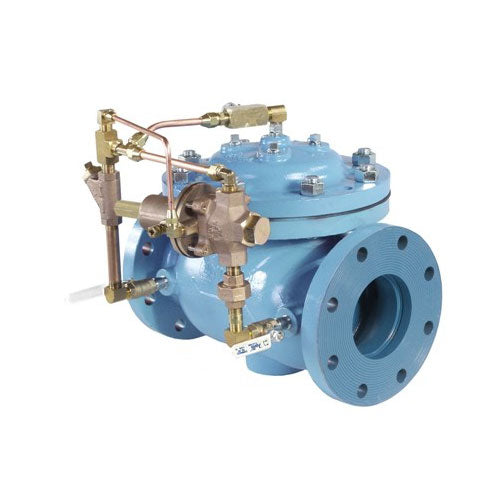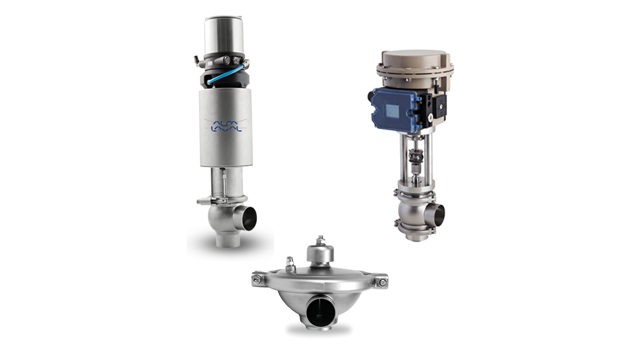Optimizing System Control with High-Performance Control Valves
Achieve Seamless Combination and Control With Quality Building Automation Controls
In the realm of modern building administration, the value of high quality building automation controls can not be overstated. Welcoming high quality building automation controls is not just an issue of comfort but a calculated imperative for companies aiming to maximize their centers' efficiency and sustainability.

Evolution of Structure Automation Controls
Throughout the previous couple of years, the advancement of building automation controls has substantially changed the method buildings are managed and run. At first, building automation systems largely concentrated on fundamental features such as regulating home heating, air, and air flow conditioning (COOLING AND HEATING) systems. Nonetheless, as modern technology progressed, these controls have actually become extra sophisticated, permitting a wider variety of structure systems to be integrated and handled centrally.
The evolution of building automation controls has actually seen a shift in the direction of even more smart systems that can adjust to changing problems in real-time. This adaptability is vital for enhancing energy efficiency and guaranteeing occupant comfort. Additionally, contemporary building automation controls now supply functions such as predictive upkeep, remote monitoring, and information analytics, enabling center managers to make data-driven choices to enhance structure efficiency.

Advantages of Quality Integration
The advancement in building automation controls in the direction of even more smart systems has actually underscored the significant benefits of high quality assimilation in maximizing building procedures and boosting total effectiveness. Quality integration of developing automation controls offers a number of essential advantages. To start with, it brings about boosted power performance by allowing different systems to interact effortlessly, guaranteeing optimal efficiency and reducing power waste. Top quality assimilation improves occupant comfort and performance by allowing customized control over ecological settings like illumination, temperature level, and air quality. This personalization can result in a more comfortable and conducive working or living setting. Furthermore, high quality integration streamlines maintenance and fixing processes, as all systems are interconnected and can be monitored and controlled from a central interface. This central control likewise supplies better visibility and insights right into building efficiency, allowing aggressive upkeep and optimization techniques. In general, the benefits of quality assimilation in structure automation controls are indisputable, offering raised effectiveness, convenience, and operational efficiency.
Boosted User Experience and Access
Enhancing customer interaction with building automation regulates via user-friendly layout and enhanced access elevates the overall experience for owners and center managers alike. By concentrating on individual experience, developing automation systems can come to be much more user-friendly and effective. Intuitive interfaces, clear navigating, and personalized settings encourage individuals to connect with the controls easily and effectively.
Accessibility functions play an essential function in making sure that all people, including those with impairments, can utilize the building automation manages easily. Integrating attributes such as voice commands, responsive buttons, and color-contrasted screens can improve click to read accessibility and make the controls more comprehensive.
Furthermore, boosted user experience causes greater customer satisfaction, enhanced productivity, and much better decision-making. Owners can change ecological setups according to their preferences, while facility supervisors can efficiently keep track of and handle building systems - control valves. In general, prioritizing customer experience and availability in structure automation manages adds to an extra seamless and efficient building setting for all stakeholders included
Sustainable Practices Through Automation

Furthermore, automation can promote the assimilation of renewable resource sources such as solar panels or wind turbines into building procedures. By instantly readjusting power use based on the accessibility of sustainable power, structures can further reduce their reliance on non-renewable resources. This seamless combination of sustainable practices not only profits the environment but likewise improves the general operational performance and cost-effectiveness of the structure. Via automation, buildings can line up with modern sustainability goals and contribute to a greener future.
Future Trends in Structure Control Systems
In expectancy of evolving and advancing technologies company website sustainability practices, the trajectory of structure control systems is positioned to embrace ingenious solutions and transformative methods. One prominent pattern forming the future of building control systems is the boosted assimilation of Artificial Intelligence (AI) and equipment knowing. These innovations allow buildings to adjust in real-time to changing conditions, enhancing power usage and boosting convenience for residents. In addition, the Web of Things (IoT) is transforming building control systems by connecting devices and sensing units to enhance operations and boost effectiveness.
Another key fad is the emphasis on cybersecurity measures to safeguard against prospective dangers to constructing automation systems. As buildings become extra interconnected, making certain durable cybersecurity procedures will certainly be vital to protect sensitive data and protect against unapproved gain access to.
Moreover, the change towards cloud-based systems is obtaining momentum, enabling streamlined control and remote accessibility to building systems. This facilitates easier monitoring, upkeep, and updates, enhancing the overall efficiency and adaptability of structure control systems. As technology remains to development, these trends are anticipated to form the future landscape of structure automation controls, driving development and sustainability in the constructed environment.
Verdict
Future patterns in structure control systems are likely to focus on basics more improving automation abilities for improved energy performance and general performance. It is necessary for structure owners and operators to focus on the adoption of quality structure automation manages to maximize building procedures and accomplish long-term sustainability goals.
In the realm of modern-day structure monitoring, the relevance of top quality structure automation controls can not be overemphasized. In general, the development of structure automation controls continues to drive technology in the structure monitoring market, using brand-new opportunities for creating smarter and much more lasting structures.
The development in building automation controls in the direction of even more smart systems has highlighted the considerable advantages of quality integration in enhancing building procedures and enhancing overall effectiveness. Overall, focusing on customer experience and accessibility in building automation controls contributes to a more seamless and effective building setting for all stakeholders included.
It is important for building owners and operators to focus on the adoption of top quality structure automation regulates to enhance building operations and attain lasting sustainability objectives. - control valves